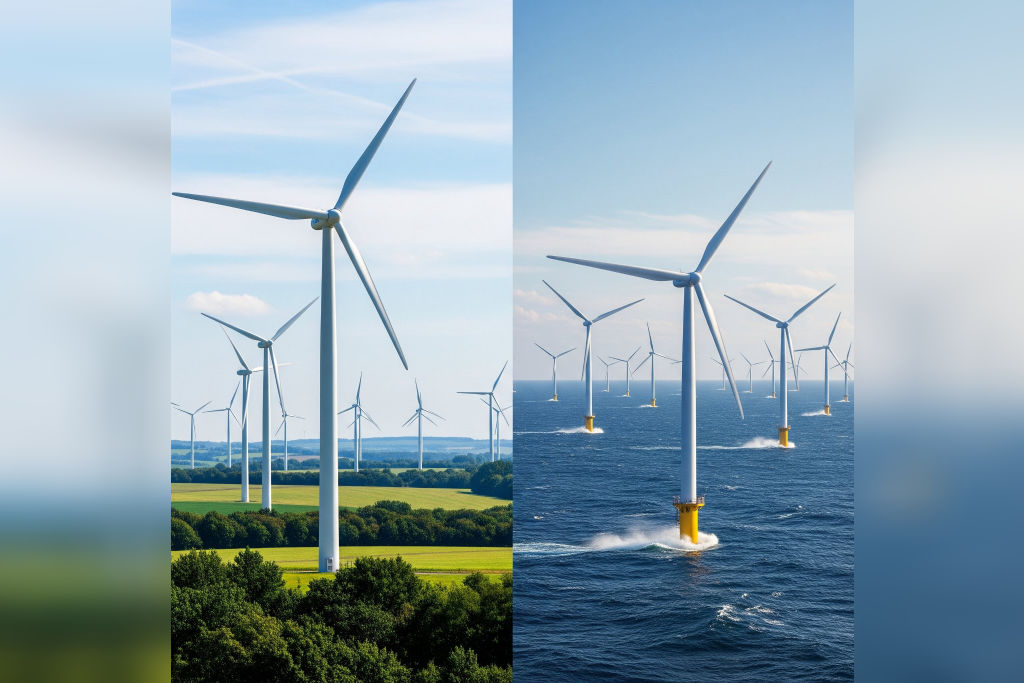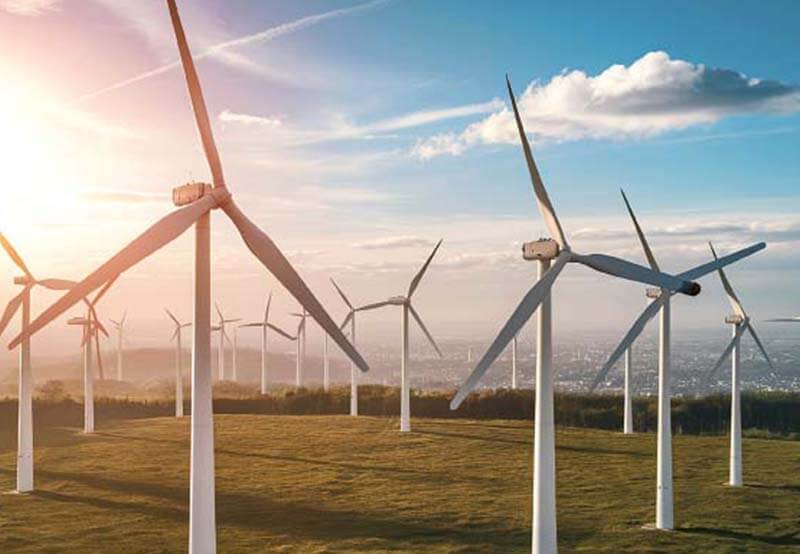Onshore & Offshore Wind Expansion: Industry Insights
With the world moving towards sustainable energy sources, wind power has become the powerhouse of global energy sources in the world. Among the two main categories of wind energy—onshore wind farms and offshore wind farms—there has been rapid expansion and innovation. The various renewable resource forms are faced with increased investment by governments, businesses and energy stakeholders as they understand their potential to reduce carbon emissions and guarantee energy security.

With wind energy playing a pivotal role in the shift toward a greener future, understanding the offshore vs onshore wind energy debate is crucial. Both types have their own benefits and challenges, which have a bearing on which option to adopt on the basis of location, investment, technology and the impact on the environment. The future of wind energy depends on how effectively we balance the strengths of onshore and offshore installations to meet growing electricity demands worldwide.
What is Wind Energy and Why is it Important?
Wind energy is a source of clean efficient power, a renewable source of power using the natural force of moving air to generate power. The wind is kinetic energy, which is translated into mechanical energy by using the power of wind turbines then to convert the mechanical energy into electricity using a generator. This is a clean source of power that helps avert the use of fossil fuels and controls global warming.
As the world pays more emphasis on curbing emission of greenhouse gases, wind energy has been a major pillar in development through sustainability. Whether through expansive offshore wind growth or well-established onshore projects, wind farms are shaping the energy landscape of the future.
What is an Onshore Wind Farm?
An onshore wind farm consists of wind turbines installed on land, typically in open areas with strong wind currents. This is so as such farms can be found in plains, hilly and even remote places where speed of wind is the best. Some key characteristics of onshore wind farms include:
- Lower Installation Costs: Onshore wind farms are relatively more affordable to develop compared to offshore projects.
- Ease of Maintenance: Maintenance is not tricky because turbines exist on land.
- Ease of Connecting to the Grids: They are in close proximity to the grids making it easy to hook-up the power grids.
- Land Use Considerations: While they require significant land space, onshore wind farms can coexist with agricultural activities.
Despite these benefits, onshore wind farms face challenges such as land availability, aesthetic concerns, noise pollution, and lower wind consistency in some regions.
What is an Offshore Wind Farm?
An offshore wind farm consists of wind turbines installed in bodies of water, usually oceans or large lakes. These turbines are built in harsh marine environments, and are usually way off shore to draw stronger and more stable winds. The defining characteristics of offshore wind farms include:
- Faster Wind Speeds: The offshore sites also have more and more stable winds that induce higher energy generation.
- Reduced Land Constraints: Offshore wind farms do not compete with agricultural land or residential areas.
- Higher Efficiency: Since wind patterns are generally consistent at offshore, offshore turbines tend to run at higher capacity factors, compared with onshore ones.
- Environmental and Visual Benefits: The remoteness to the locality reduces the concerns of noise and visual impacts.
However, offshore wind farms also have challenges, such as higher installation and maintenance costs, complex grid connections, and potential marine ecosystem disruptions.
Offshore vs Onshore Wind Energy: Key Differences
The choice between offshore and onshore wind energy largely depends on factors such as cost, efficiency, environmental considerations, and location feasibility. Here’s a comparative analysis:
-
Location
-
Onshore turbines are built on land, often in rural or windy regions.
-
Offshore turbines are placed at sea, far from human settlements.
-
-
Efficiency
-
Offshore wind energy is generally more efficient because of stronger and steadier winds.
-
Onshore wind energy can be less efficient due to wind disruptions caused by land features like mountains, trees, and buildings.
-
-
Cost
-
Onshore wind projects are cheaper to build and maintain.
-
Offshore wind projects are more costly due to complex foundations, underwater cabling, and challenging maintenance conditions.
-
-
Environmental and Social Impact
-
Onshore projects can impact local wildlife, take up land space, and sometimes face public opposition.
-
Offshore projects have less visual impact but may affect marine ecosystems and require specialized environmental planning.
-
-
Energy Potential
-
Offshore wind farms can be larger and generate more electricity to supply big cities and industries.
-
Onshore wind farms are smaller but are easier to set up and can provide energy to local communities more quickly.
-
Offshore Wind Growth and the Future of Wind Energy
The offshore wind industry is surging like never before due to the technology and government guidelines. Countries like the UK, Germany, China, and the US are heavily investing in large-scale offshore wind farm projects. Offshore installations are becoming even more promising, with the development of such innovations as floating wind machines in deeper waters.
Looking ahead, the future of wind energy is bright, with increasing adoption of hybrid energy solutions that integrate wind, solar, and battery storage. The worldwide governments as well as private sectors are making significant achievements concerning the use of wind energy in the global energy mix aiming at making the energy supply more sustainable and resilient by having high targets to achieve.
Conclusion
Wind energy is transforming the global energy landscape, offering a sustainable, efficient, and scalable solution to meet increasing electricity demands. While onshore wind farms remain a cost-effective and accessible option, offshore wind growth is unlocking new frontiers with higher energy yields and fewer land-use conflicts. The future of wind energy depends on continued innovation, strategic investments, and supportive policies that maximize the benefits of both offshore and onshore wind farms.By understanding the nuances of offshore vs onshore wind energy, industries, policymakers, and consumers can make informed decisions that drive the renewable energy transition forward. As advancements continue, wind power will play an even greater role in creating a cleaner and more sustainable world.
Frequently Asked Questions (FAQs)
The primary difference lies in location: onshore wind farms are built on land, while offshore wind farms are installed in bodies of water. Offshore farms tend to have higher wind speeds and efficiency but come with increased costs and logistical challenges.
The offshore wind growth trend is fueled by technological advancements, stronger and more consistent wind speeds at sea, and policy incentives promoting renewable energy. Countries worldwide are investing in offshore wind to meet sustainability goals.
Onshore wind farms are generally more cost-effective due to lower installation and maintenance expenses. However, offshore farms can generate more power due to stronger winds, potentially offering long-term economic benefits.
Wind energy reduces dependence on fossil fuels, lowers greenhouse gas emissions, and provides a renewable power source. Both onshore wind farms and offshore wind farms play vital roles in achieving global carbon neutrality goals.
The future of wind energy includes innovations such as floating wind turbines, improved energy storage solutions, increased hybrid renewable energy projects, and enhanced offshore wind farm expansion worldwide.












